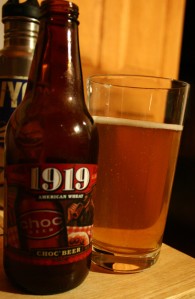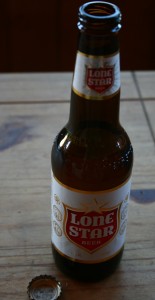Well shit. Clearly I am not cut out for this regular writing gig, luckily no one is paying me too so I’m feeling no pressure at all, and I have to admit it feels great. However, there are now other things that I would rather avoid doing so it’s time to do a biannual review/brew kit breakdown.
So I recently got married and as a part of our “money saving” tactics we decided that I would brew my own beer (as much as brewing your own beer involves a box with all the ingredients, and instructions on exactly what to do). We chose three types of beer, an American Pale for my wife, a Smoked Porter for me, and then a Red Ale for all people who, we figured, probably would not enjoy our taste in beer. I assumed that the Red would get emptied, the American Pale would be half full and I would be the only smart one drinking a smoked porter on a cold March day. Now that I’m married the rate of me being wrong has increased 10-fold, but never did I think it would start so soon. The Porter Was the Hit of the Reception! Take a breath, and now don’t tell anyone that you were as shocked as me, learn from my mistakes and move forward. Everyone loved the porter. That is of course operating on the assumption that everyone = people-with-a-proclivity-to-choose-a-porter, but that was an astounding number of people! And throughout the day I’d say I got about half as many compliments on the Porter as I did congratulations on the marriage. So I thought I’d share my homebrewing experience with you. Buckle down and maybe grab a beer or two because this might take awhile.
First off I got my fermenter, giant spoon, hygrometer (Coopers Beginner Brewing Kit), candy thermometer (normally, but I used a meat thermometer in this instance) and sanitized it with some good old fashioned bleach. I like bleach because, having worked in a lab before, I know how easy it can be to contaminate nutrient rich environments with unwanted bacterial cultures even under sterile conditions. After bleaching I gave it a really good rinse using super hot water. I’ve used this technique twice now and have had no problems at all; I just make sure every piece of the fermenter that can be removed, is removed and individually washed, and that all the bleach gets rinsed off.
 After that I grab my stock pot fill it with 2.5 gallons of water (supposedly the more water you have in the pot during the boiling of the hops the greater your IBUs) and pull out all of my Brewer’s Best Smoked Porter ingredients. Being a little overly concerned about screwing up everyone’s beer for the wedding, I read the instructions 4 or 5 times before starting.
After that I grab my stock pot fill it with 2.5 gallons of water (supposedly the more water you have in the pot during the boiling of the hops the greater your IBUs) and pull out all of my Brewer’s Best Smoked Porter ingredients. Being a little overly concerned about screwing up everyone’s beer for the wedding, I read the instructions 4 or 5 times before starting.
 Now, to the fun part! Turn the stove on and heat the water. We poured all of the grains into the cheesecloth sack and tied a lose knot at the top so we weren’t scrambling when the water reached the ideal temperature range for steeping, 150-165°F. Once there the grains stayed in for 20 minutes and we were cautious to make sure the temperature didn’t get to high as this can make the beer tasty funky. We pulled the bag out without wringing any liquid back into the pot, and then boiled the shit out of it! Well, I suppose we just boiled it in a reasonable fashion. Once it got to a nice, calm rolling boil we dumped in our the extracts, which we had in a pot of warm water to make them dump easier, and boy did they dump easy! You should have seen it, just gorgeous. At this point we made sure to constantly stir the mixture as the extracts will begin to “caramelize” on the bottom of the pot and will eventually burn, which I’m assuming is not good for beer.
Now, to the fun part! Turn the stove on and heat the water. We poured all of the grains into the cheesecloth sack and tied a lose knot at the top so we weren’t scrambling when the water reached the ideal temperature range for steeping, 150-165°F. Once there the grains stayed in for 20 minutes and we were cautious to make sure the temperature didn’t get to high as this can make the beer tasty funky. We pulled the bag out without wringing any liquid back into the pot, and then boiled the shit out of it! Well, I suppose we just boiled it in a reasonable fashion. Once it got to a nice, calm rolling boil we dumped in our the extracts, which we had in a pot of warm water to make them dump easier, and boy did they dump easy! You should have seen it, just gorgeous. At this point we made sure to constantly stir the mixture as the extracts will begin to “caramelize” on the bottom of the pot and will eventually burn, which I’m assuming is not good for beer.
Our kitchen sorta smells like bread at this point in time, an extremely sweet bread. Once the extract is all in we then move on to the bittering hops. We stirred them in to the pot ever so slowly. I think the slow addition is to prevent things from gettin’ a little too crazy too quickly – kinda like how things in your tummy get a little too crazy too quickly when you go from eating your morning bowl of Cheerios complete with yummy milk and start taking shots of Tequila immediately after. Things start a’churnin, and then you spend the rest of your day in the bathroom – assuming you can make it that far. With your beer the pot starts to boil over and then you spend the rest of the day in the kitchen – cleaning – because the burners are now encased in crystalized wort. Anyway, once the hops are added we crack open a couple beers and wait the 55 minutes it needs to get all the bitter goodness in there. Sit back, relax, and take in a deep breath of that wonderfully beery smell now emanating from your kitchen and throughout your household. Once 55 minutes have passed it’s time to add the aroma hops – mmmmmmmmmmmmMMMMMMM!!! The aroma hops go for 5 minutes and zen we must Ter-minate ze boil!
At this point I’m at my least efficient. With only an in-sink ice bath to cool down my wort I’m spending way too much time waiting around just hoping to avoid inoculation by some unsavory bacterial species. Lid on, lid off it’s, all a toss up at this point as the heat dissipates faster with the lid off, but there’s also more air getting in introducing those cultures causing your feet to stink – wash your feet, or just leave your socks on – into that beer you just spent hours making. I choose the uncomfortable in-between, put the lid on, take the lid off, put the lid on, take the lid off, on, off, on off until I’m basically fanning the damn thing. But, alas, eventually the temperature does get low enough (about 135°F). Then I wind up pouring everything from my stock pot into my fermenter, you know, cause everybody’s welcome at my pool! Once to this point, things start to calm down and I add cold water to about the 18L (5 gallon) mark on my fermenter. The temperature should be about right for the yeast, so I throw them in, seal it up, and hide it in a warm dark place for about a week. There should some bubbling as Carbon Dioxide gets released from the yeast converting sugars into alcohols. From here I keg my beer! And that is how babies – uhhhh, beer – is made.
The length of time this whole process takes depends on the amount of time for fermentation but is normally about 1 1/2 weeks if you force carbonate. If you don’t it’s taken me as much as 1 1/2 months. In total I’ve made 4 brews and I’ve had my problems along the way, but so far it’s much more fun than just going to the store and handing over your hard earned cash for a six pack. My next step is to get a secondary fermenter to help clean up my beer and get a more complete fermentation. Suggestions or questions, leave a comment or drop a line. And Happy Brewing!
Review: Brewer’s Best Smoked Porter was smokey, chocolatey and wonderful! Then End!
Posted in Craft Beer
Tags: Beer, Beer Kit, Brew-It-Yourself, Brewer's Best, Chocolate, Craft Beer, Home Brew, Porter, Smoked Porter, Smokey


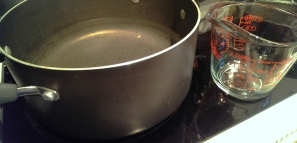
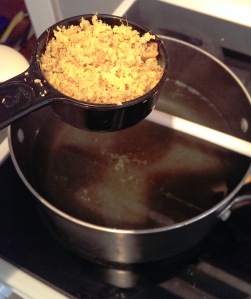
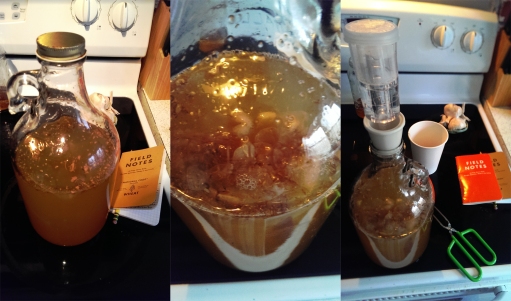
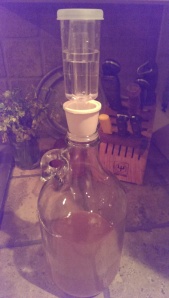
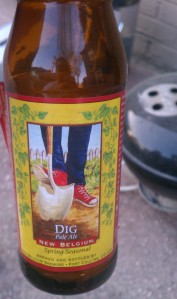
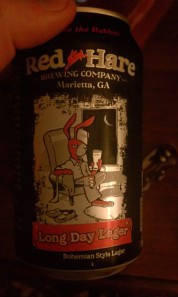
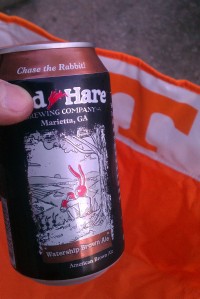

 After that I grab my stock pot fill it with 2.5 gallons of water (supposedly the more water you have in the pot during the boiling of the hops the greater your IBUs) and pull out all of my Brewer’s Best Smoked Porter ingredients. Being a little overly concerned about screwing up everyone’s beer for the wedding, I read the instructions 4 or 5 times before starting.
After that I grab my stock pot fill it with 2.5 gallons of water (supposedly the more water you have in the pot during the boiling of the hops the greater your IBUs) and pull out all of my Brewer’s Best Smoked Porter ingredients. Being a little overly concerned about screwing up everyone’s beer for the wedding, I read the instructions 4 or 5 times before starting.


